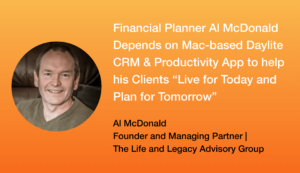As the year comes to a close we often find ourselves reflecting on the past of our business and personal lives. The forward thinking business owner must use the new year as a reminder to review their business goals and consider new opportunities to grow.
From The Fresh Start Effect: Temporal Landmarks Motivate Aspirational Behavior:
“The popularity of New Year’s resolutions suggests that people are more likely to tackle their goals immediately following salient temporal landmarks. If true, this little-researched phenomenon has the potential to help people overcome important willpower problems that often limit goal attainment.”
To start the year on the right foot, take some time to examine how well your business did this past year. Then set new, specific goals along with action plans on how you will achieve them.
Better Budgeting – Make predictions with data
Predicting your income and expenses over an entire year can be very difficult to do. This can be especially true for the solopreneur, who doesn’t have a background in business, and instead has turned their love into a career. This may or may not be you, but you have a secret weapon to improve, starting your budget: past financial statements.
Schedule some time to review your current budget, and consider how well you stuck to it, and why you deviated from it. You may have had unexpected expenses or underestimated some recurring expenses. Perhaps there are certain months that are busier than others and you didn’t account for that. Use your historical data to make better predictions and increase your revenue.
Check out this guide from infoenreprenures.org, on how you can start a yearly budget and integrate that into your end of year habits.
#Winning – Recreate success and reduce failure
When you know what works, you can make better decisions on where to spend your resources. Are your wins because of a particular salesperson’s pitch? Maybe you didn’t get a lot of new business this year because you had less referrals than last year? If you don’t know why you’re winning you cannot replicate them and grow.
Equally important, you want to find out what isn’t working. Perhaps you need to get new pricing models, develop better literature, or improve your customer service. Seeing the cold hard facts of where you need to improve or where you need to stop putting resources can be a major motivation and catalyst for growth.
There are many ways you can examine your won and loss opportunities. The main purpose is to ask fundamental questions and find the answers. Marketing strategist Sue Duris from Openview, has provided an excellent template for win/loss analysis which focuses on finding answer to these questions:
- Why did we win/lose this business opportunity?
- Why were we selected over our competition or vice versa?
- How are we perceived in the marketplace?
- How does our value proposition align with our prospects and customers’ needs?
- How do we differentiate ourselves from the competition?
Sometimes the answers are very simple and only take small adjustments to leverage them to improve. Other times, they can be difficult truths for you to face. It is important that when you review your wins and losses, that you keep in mind the purpose–to find ways to replicate your successes and improve where you have some gaps.
Reimagine Workflows – Become more efficient
Processes are often developed in real-time to resolve challenges you face now. This ad hoc nature gives a lot of flexibility and can save you time in the heat of the moment. It is not unusual for a once simple process to become more complex, addressing new needs or challenges. Over time, their complexity can become a burden, preventing you from reacting quickly to changes or seeing new opportunities.
Take a look at your business’ processes and ask yourself if they have become too large. Consider what was the original intent and ask if this is still needed. You can also create checklists to improve efficiency.
Avoid your sales team from stepping over each other and talking to the same client, or working out of order. Maybe the way you gather data for the court case makes you enter your data twice. Checklists can show you what tasks are done or pending, the order they are done, as well as give insight into what you can skip.
If you cannot reduce or remove the complexity of your processes, perhaps outsourcing is the answer. Many businesses exist solely as a service to other businesses, filling in gaps where you may not need a full-time employee. Managing shipping, accounting, and marketing are just a few examples of things you may want to take off your plate through outsourcing. When you bring in a specialist only when needed, you not only improve that process, you also give yourself more time to do the work you love, while reducing the stress of worrying about potential mistakes.
Another way to reduce the burden of an ineffective process is to resolve it with a technical solution. Avoid lengthy email chains, or interrupting your team while they work with apps like HipChat or Slack. Dropbox or Google Drive allow you to share files easily in a centralized location. Prismo 3 or Doxie can help you go paperless, turning all your documents into PDFs that are searchable and editable, making file keeping safer, easier, and faster.
Considering how you can leverage technology to improve your processes. It will provide you with long term solutions and larger growth potential because you’re not relying on manual resources.
These are just a few examples of how you can reevaluate your processes, reduce complexity in your systems, and and give you more time and flexibility to think and plan in the new year.
New Year, New Goal – Think and achieve big
With the new year coming, so do new challenges and opportunities for growth. Now that you’ve reviewed your budget, wins and losses as well as your processes, you’ve given yourself a lot of information and primed your mind to make better and more realistic goals for your company.
According to the Rockefeller Habits, a popular framework that focused on increasing the value of your business through goal setting, is creating a “big, hairy, audacious goals”, or BHAG. If you don’t have a BHAG, now is the time to start thinking of one. A BHAG is more or less a goal for your company that today might seem crazy, but over the long haul, is possible. Once you have a BHAG, you can start to break that down into bite-sized goals and initiatives that you can start working on immediately.
Ask yourself, “what can I really achieve this year that will get me closer to my BHAG and how to do I achieve this?” Then, think of what can you do in the next 1-3 months, and then further out as well. As you start to do this, you will see that you are creating a rhythm, which for the short term are very specific and measure and expanding out more general. You will have a roadmap that shows you how to hit your marks, and move on to the next seamlessly and without hesitation.
Now you’ll have created a manual, documenting your where you need to go, the methods needed to succeed and have fostered an attitude that will help you guide your company for the long run. This, of course, should be reviewed next year too, and reconsider what you need to do to achieve your BHAG.
Start now. Look at how your business is growing, why it’s growing, and what you’re doing to keep that up. Now use this information to think and write down where you want to take your company and its legacy.
Begin now and start the new year ahead of your competition.



